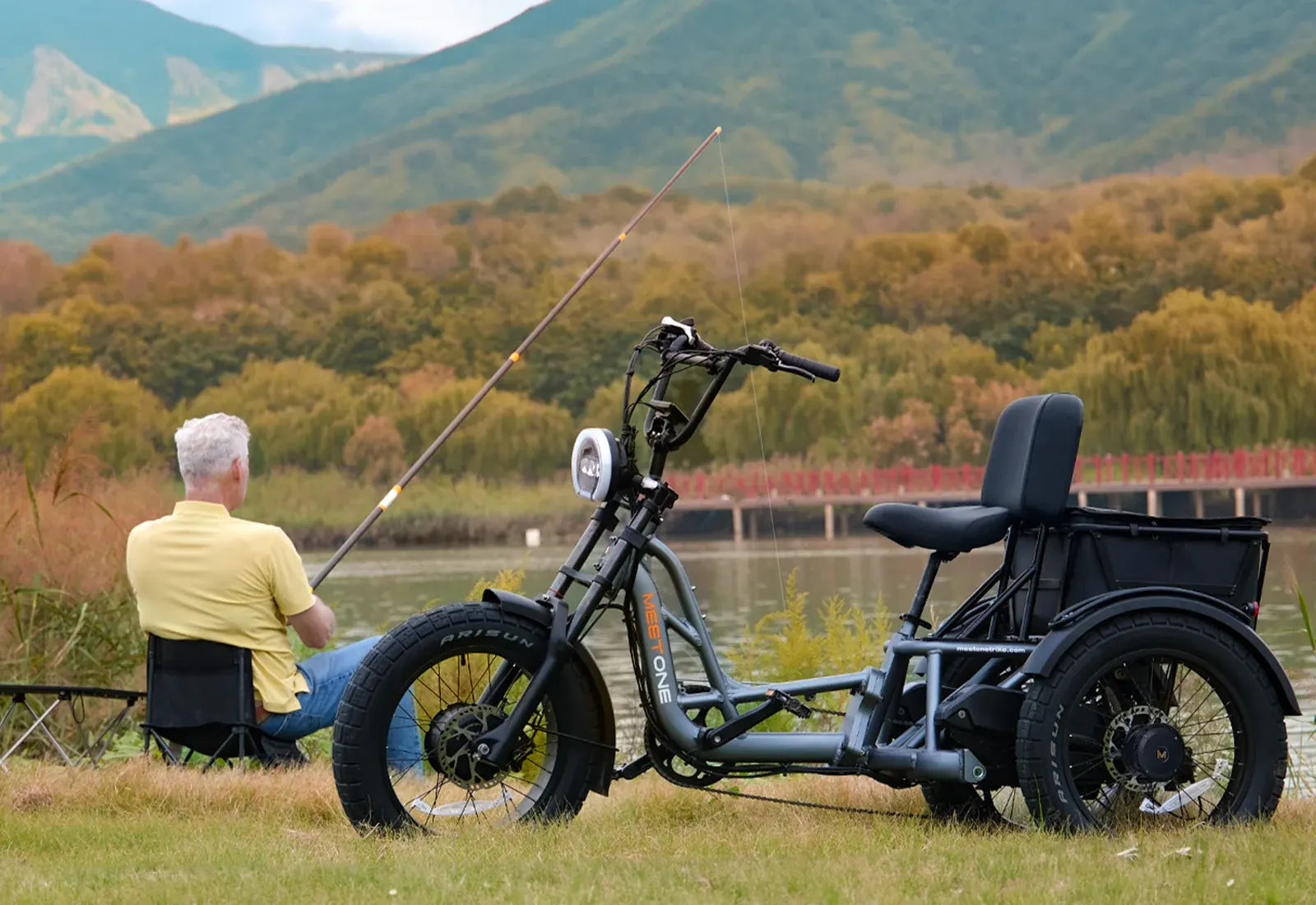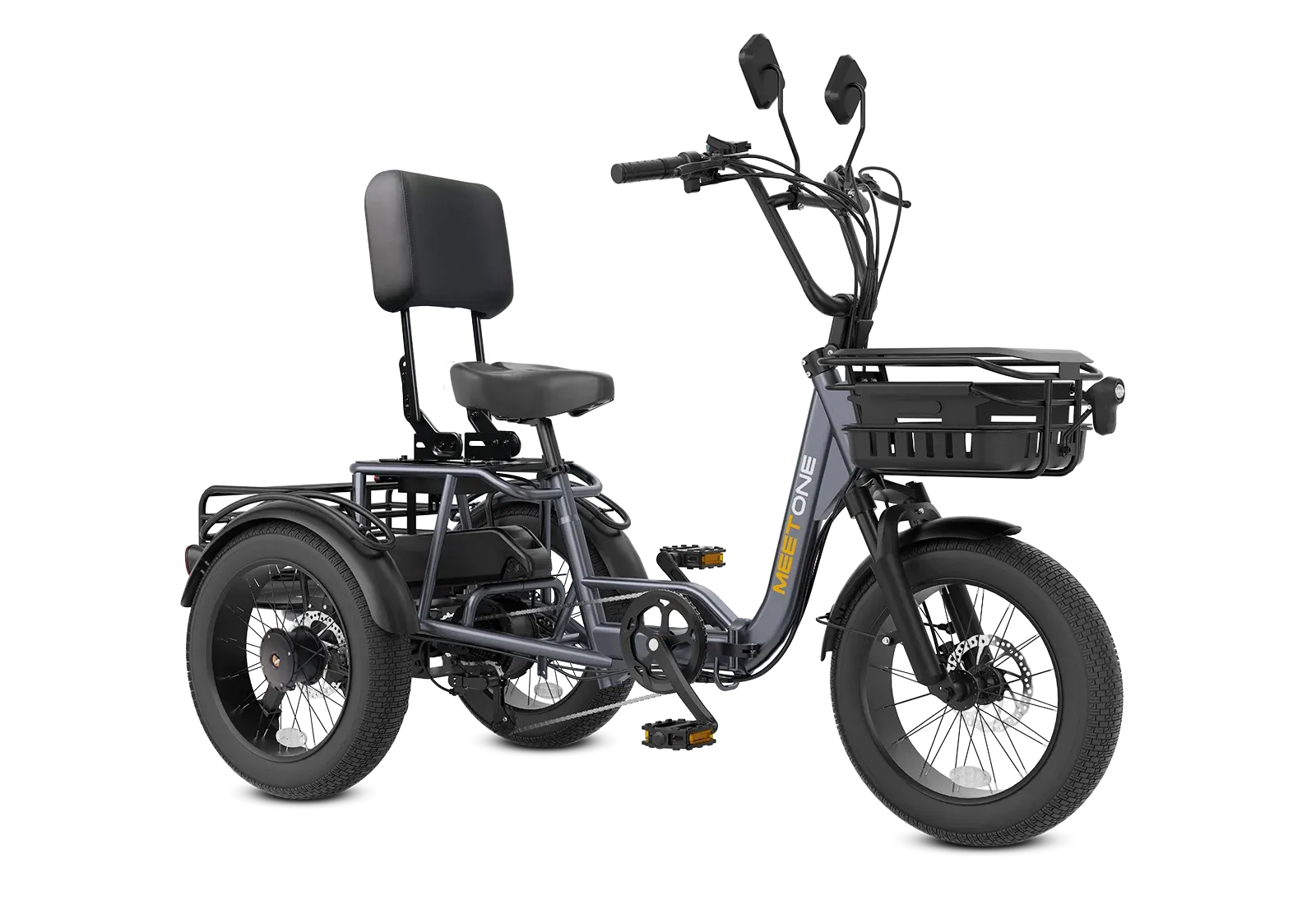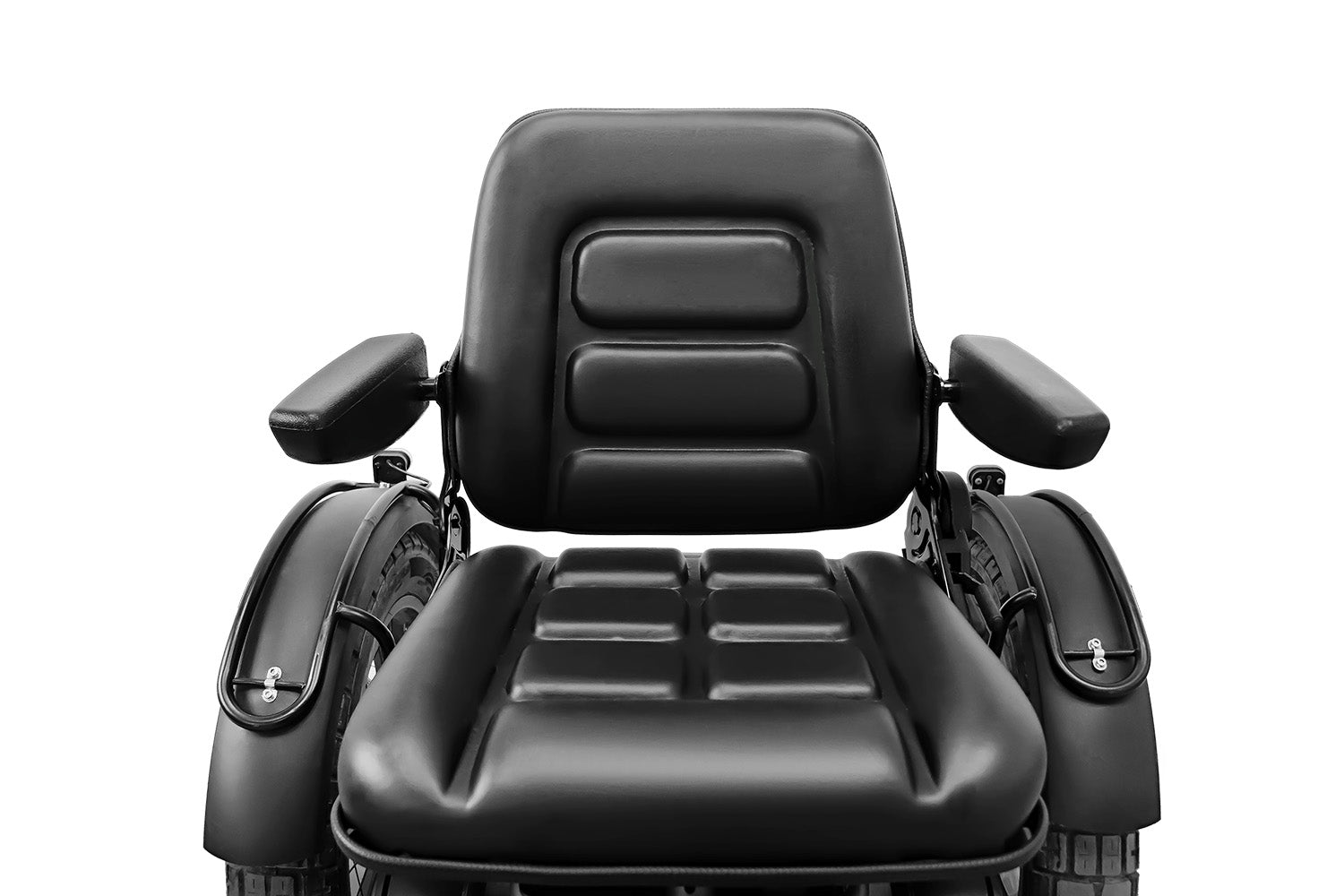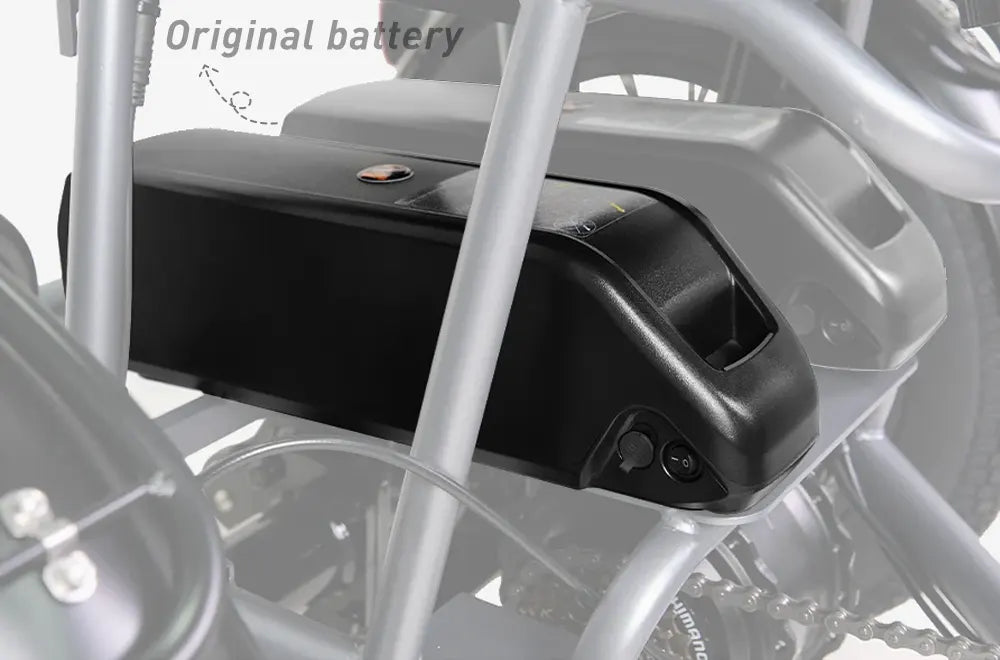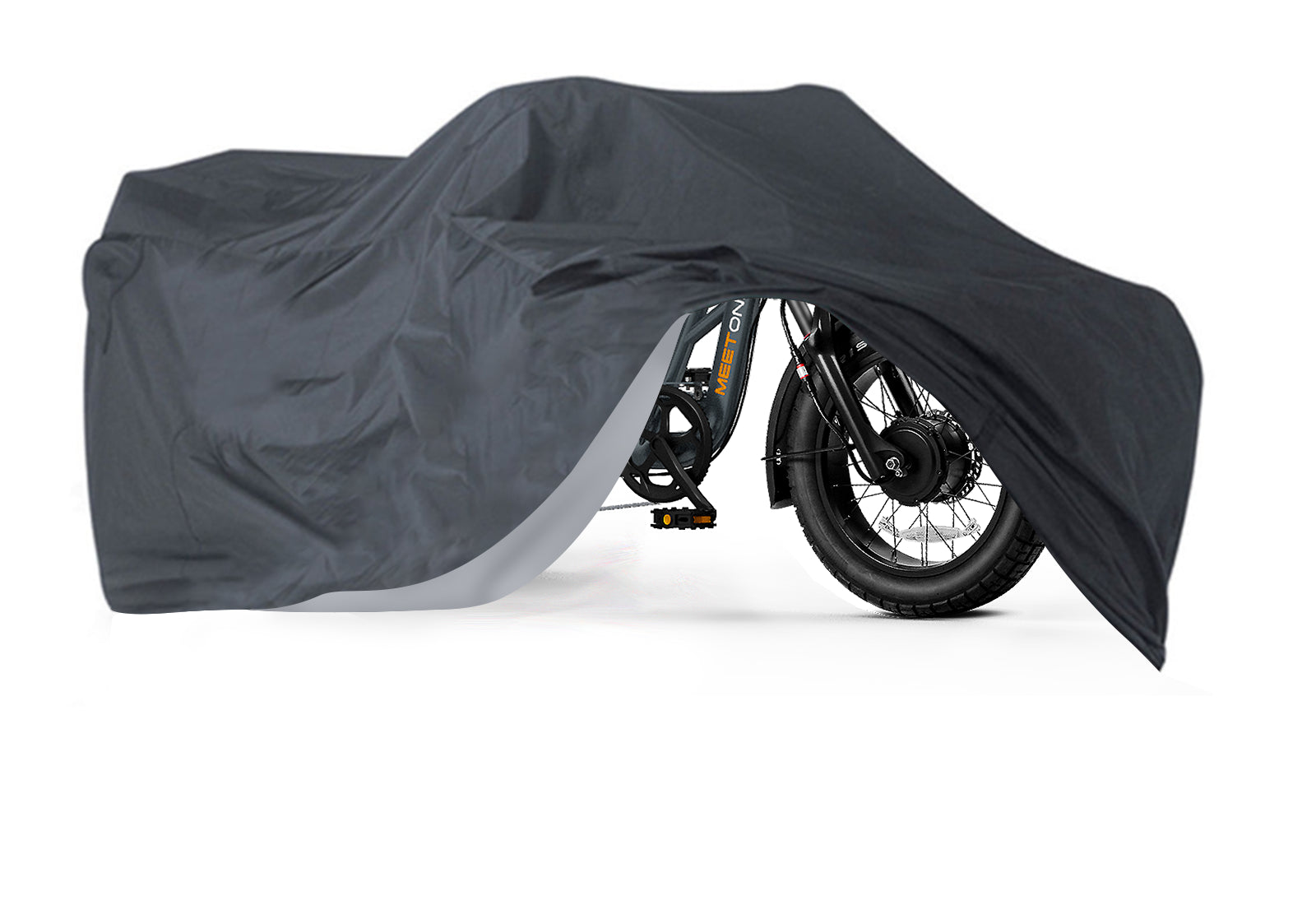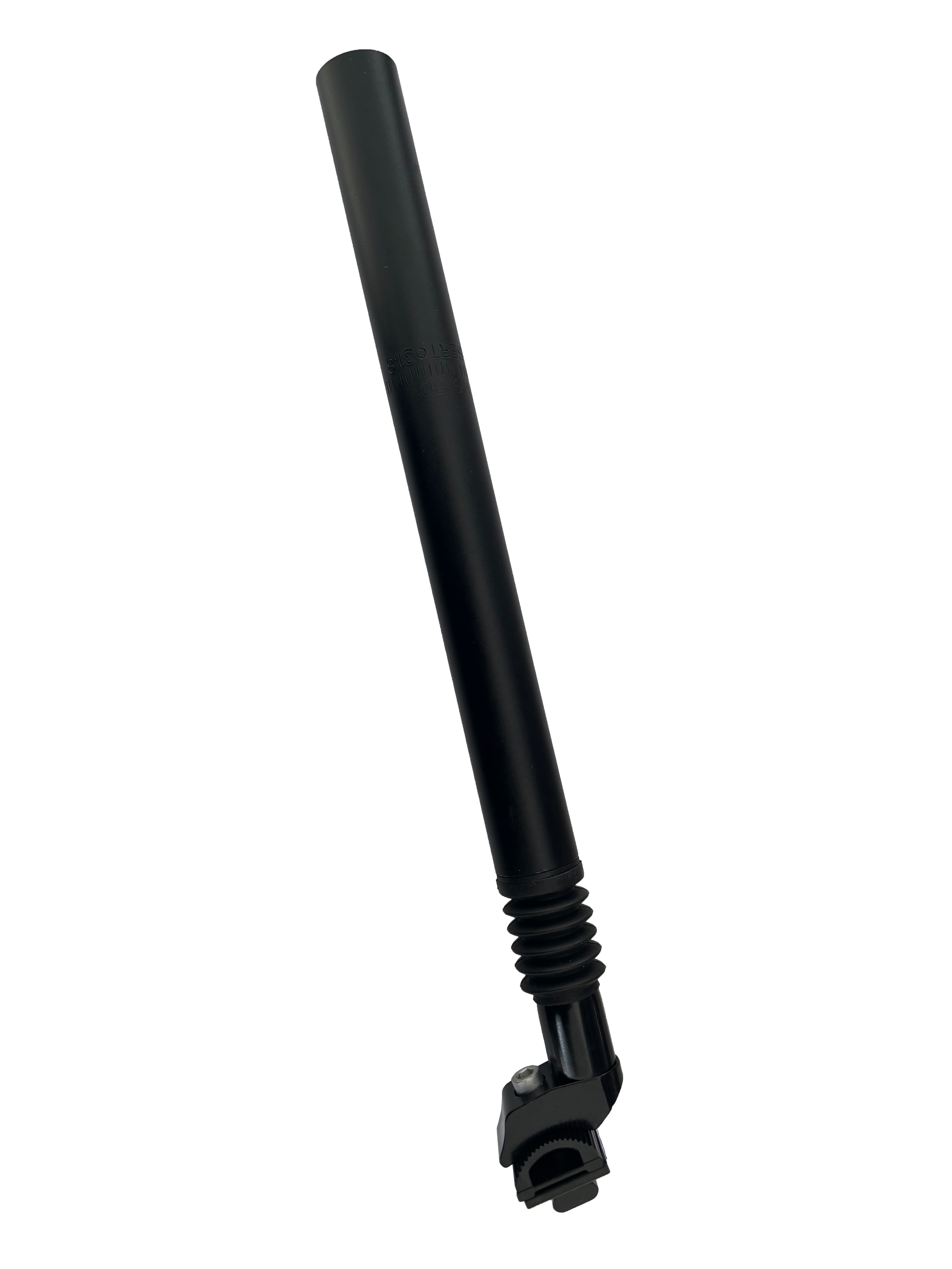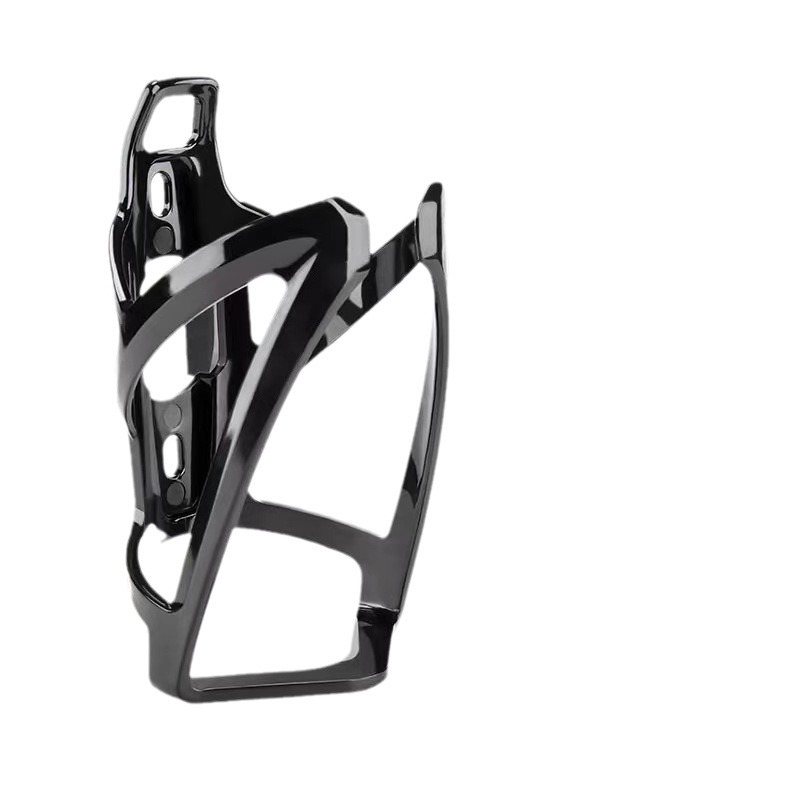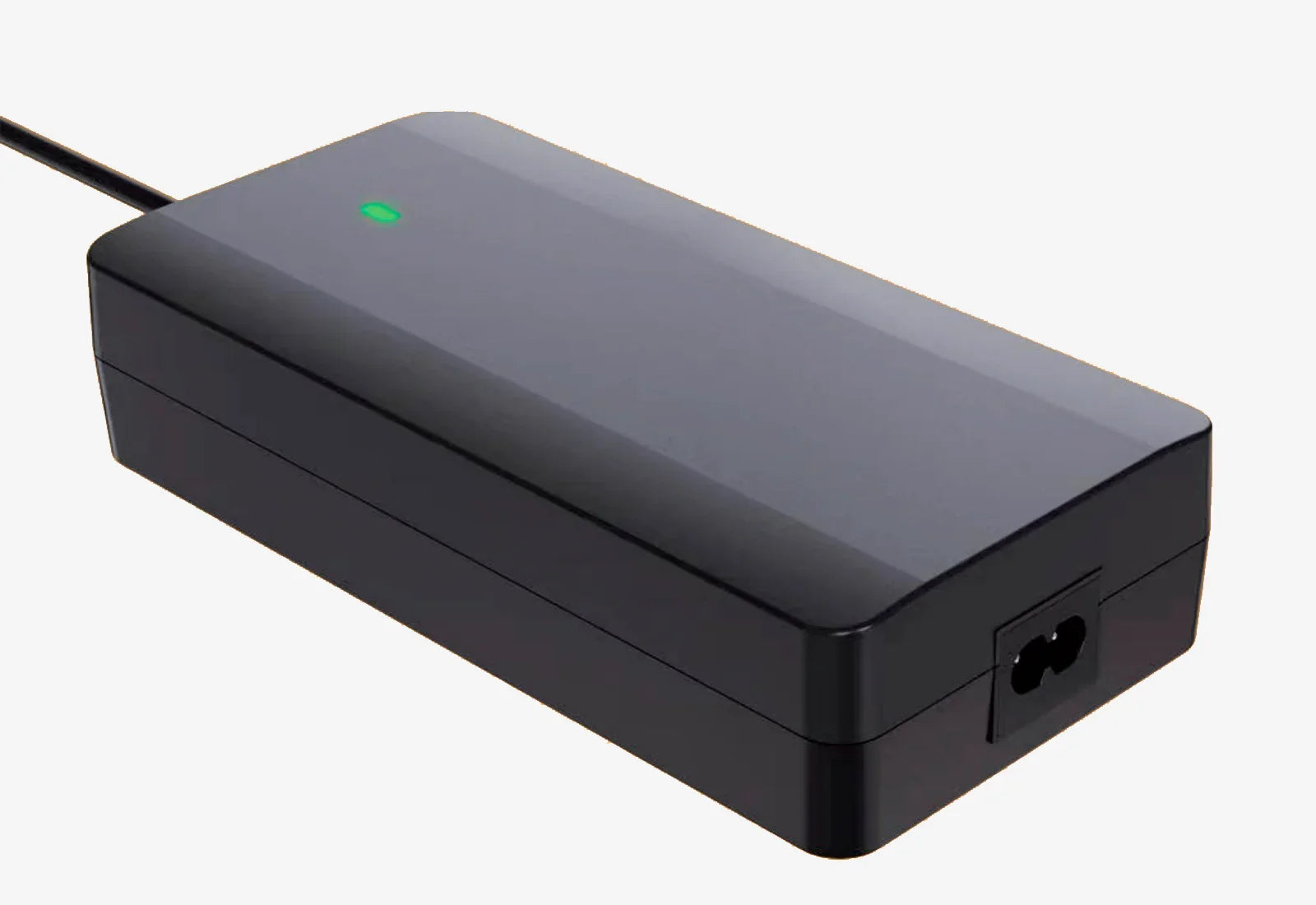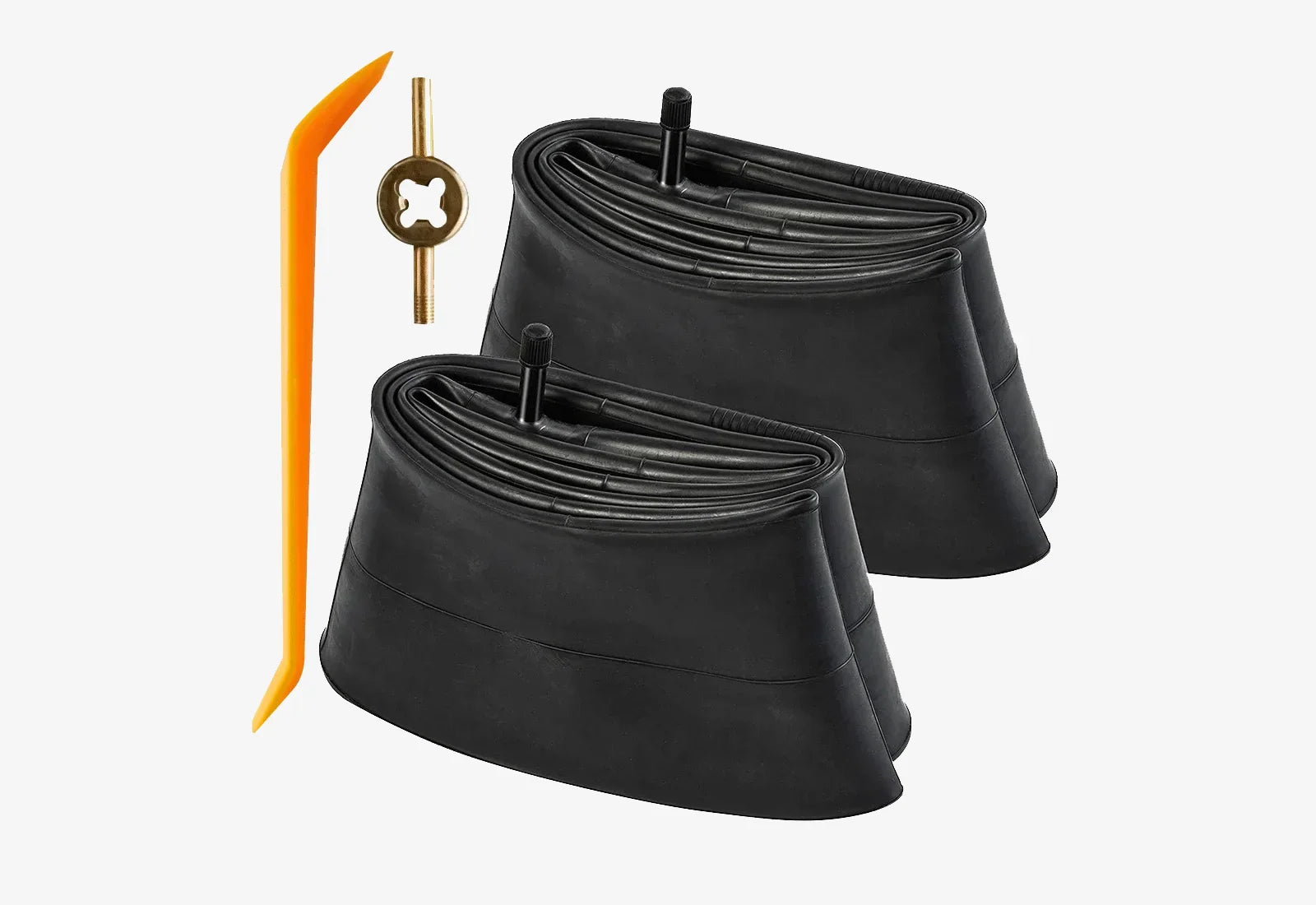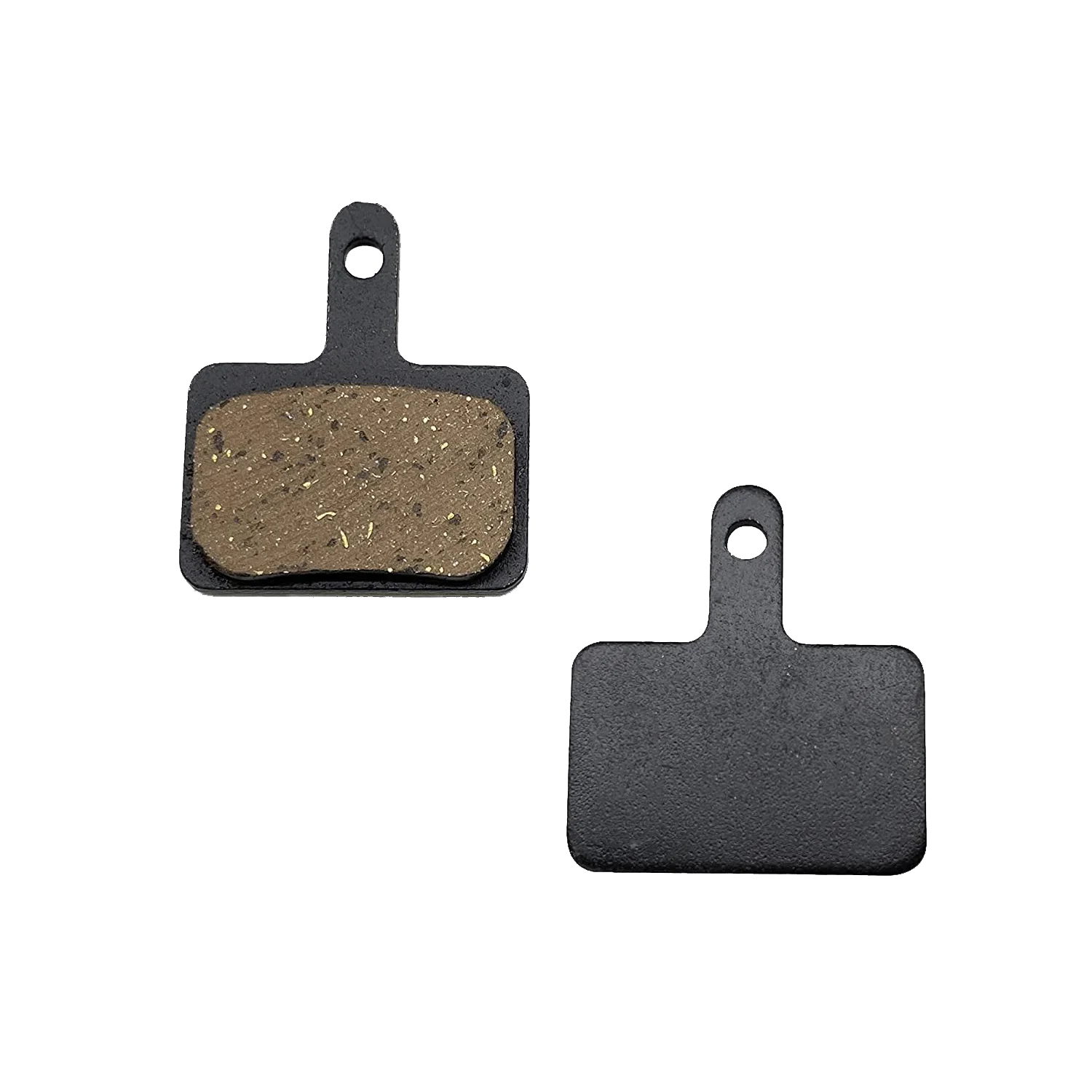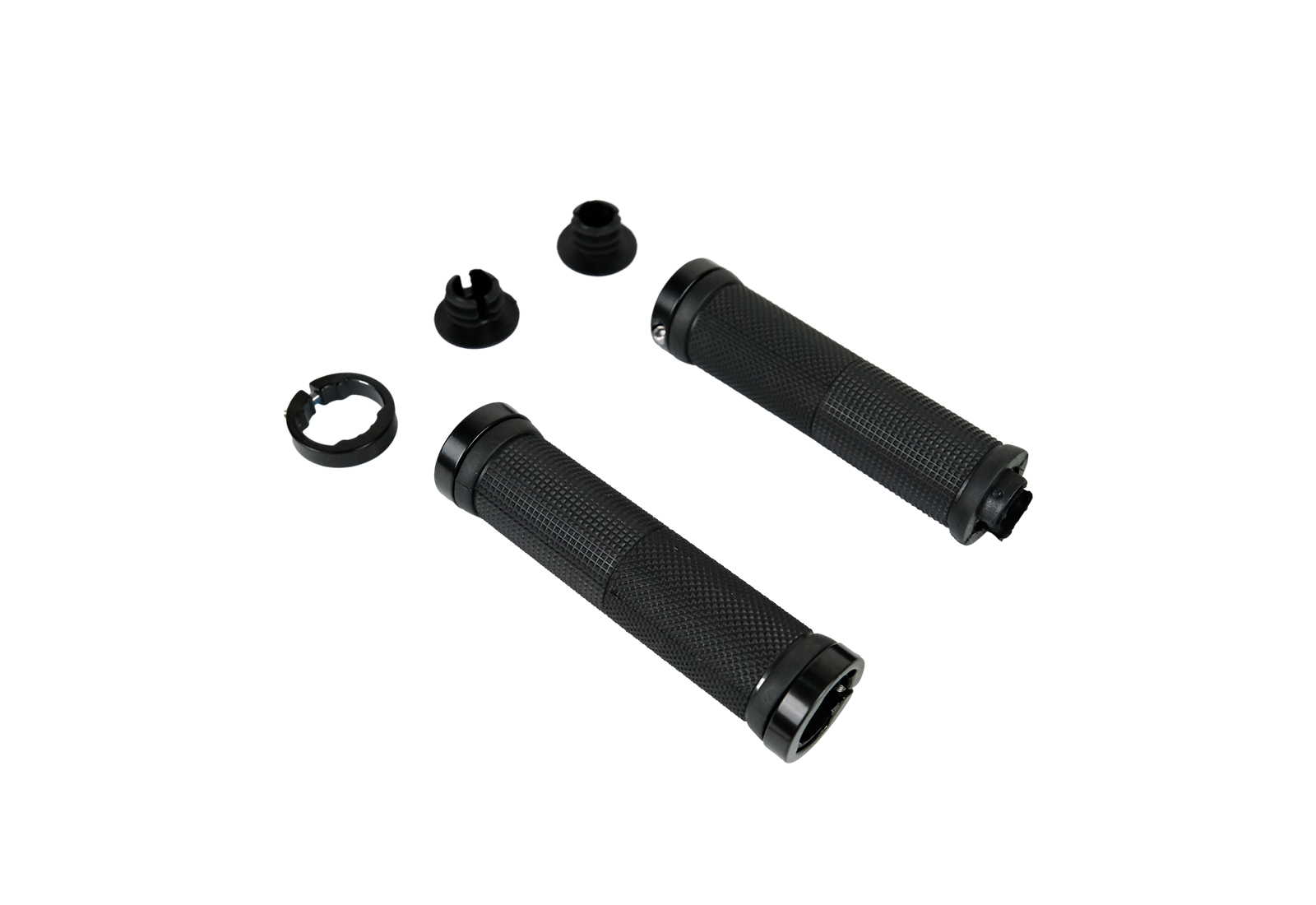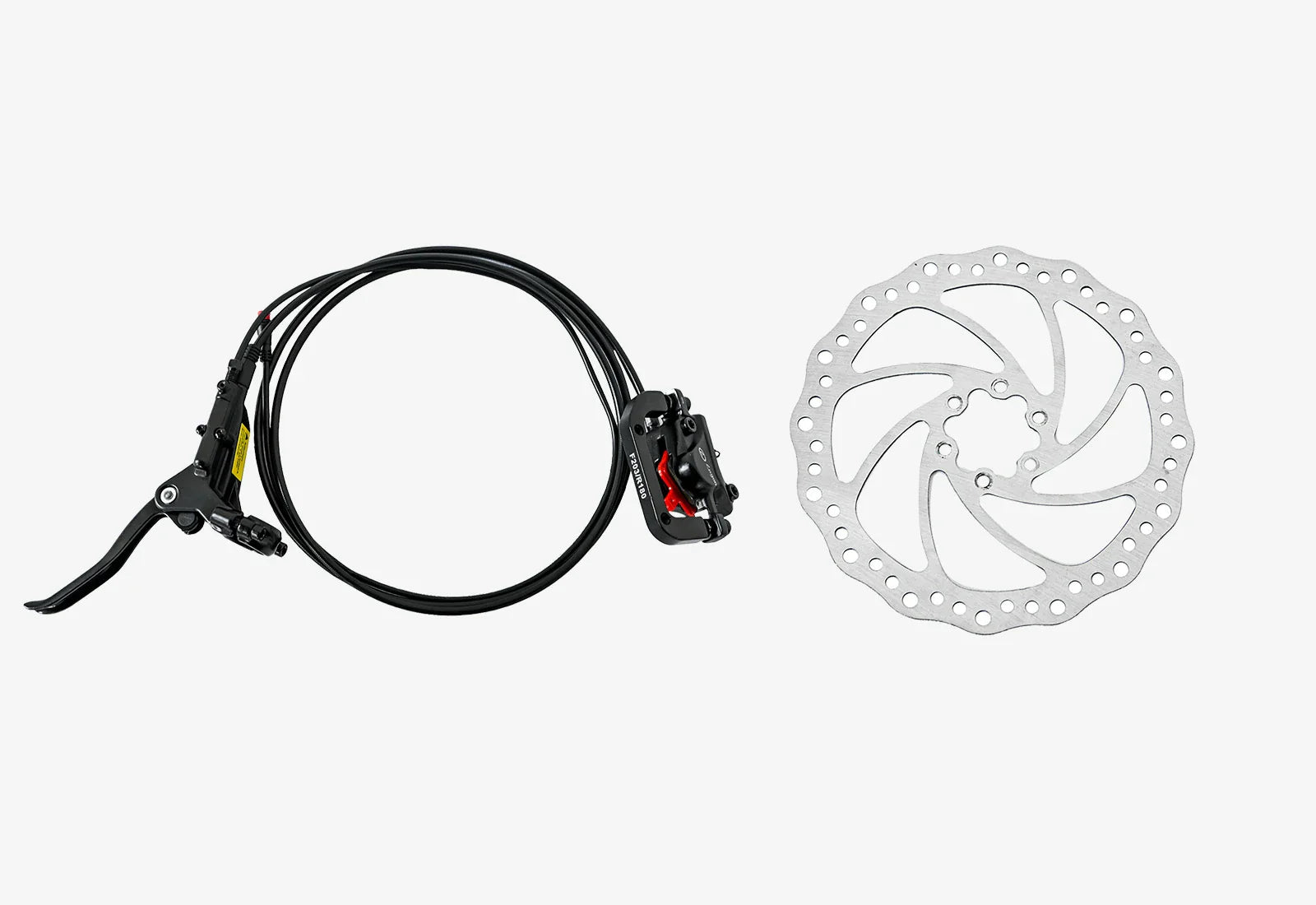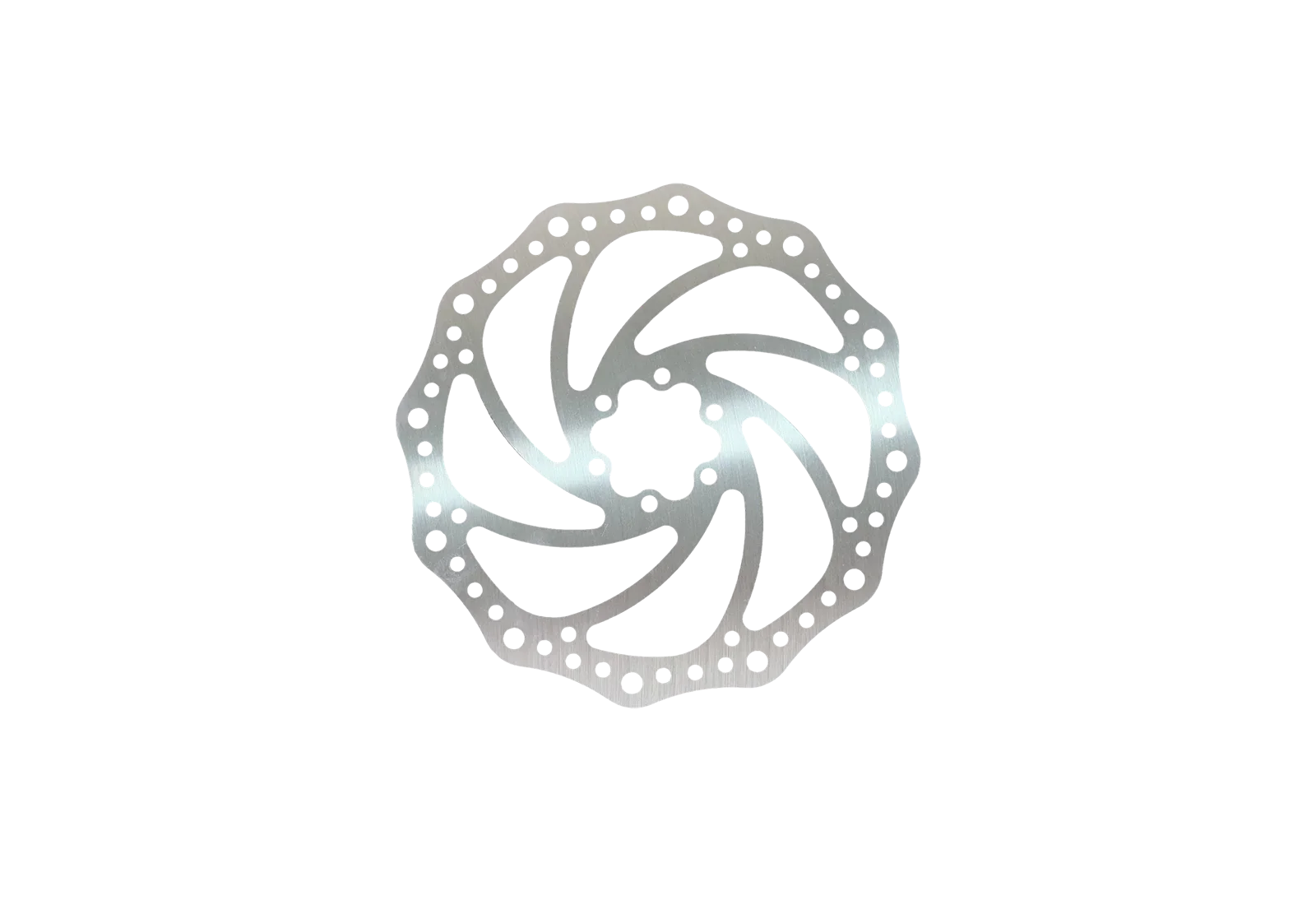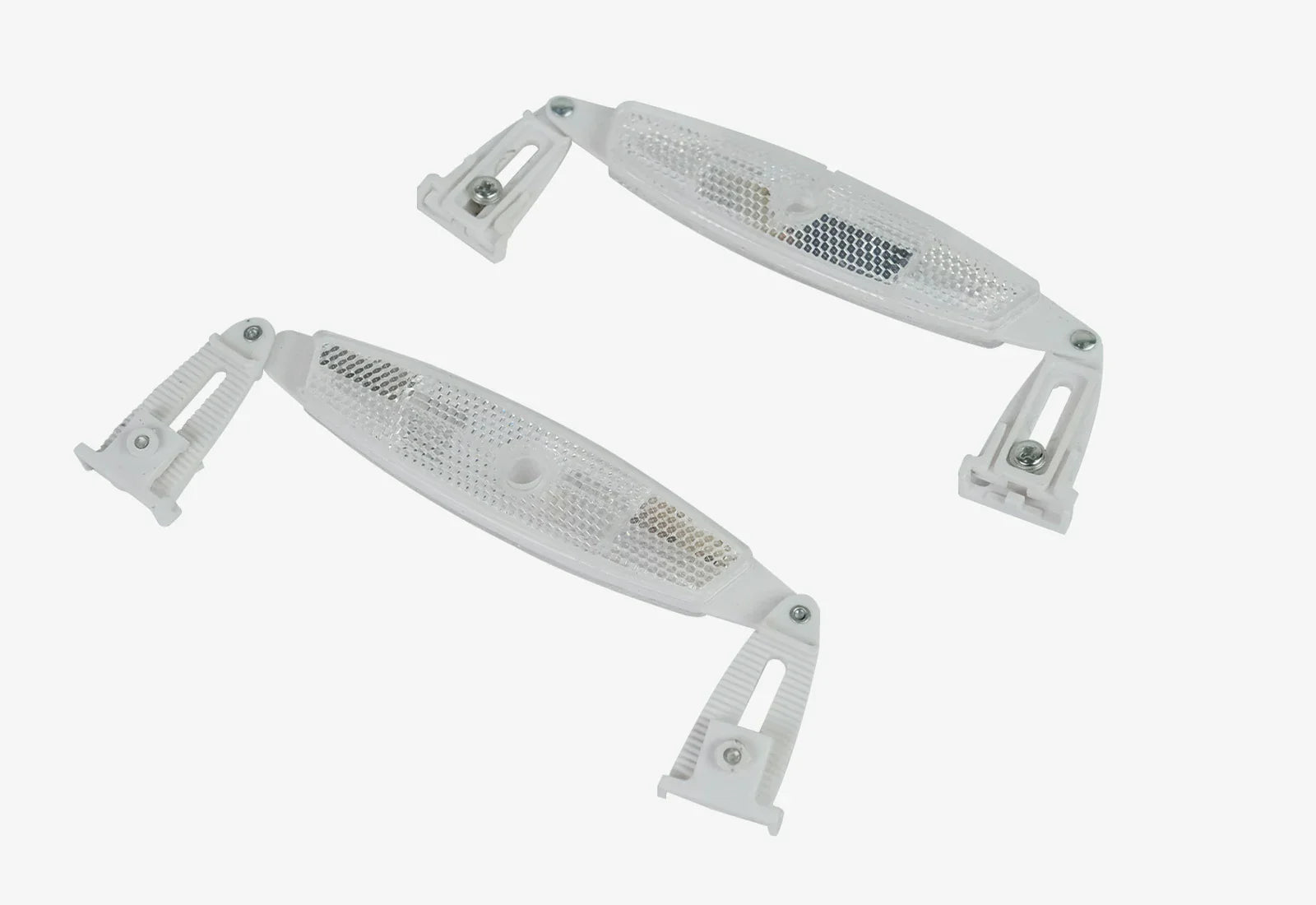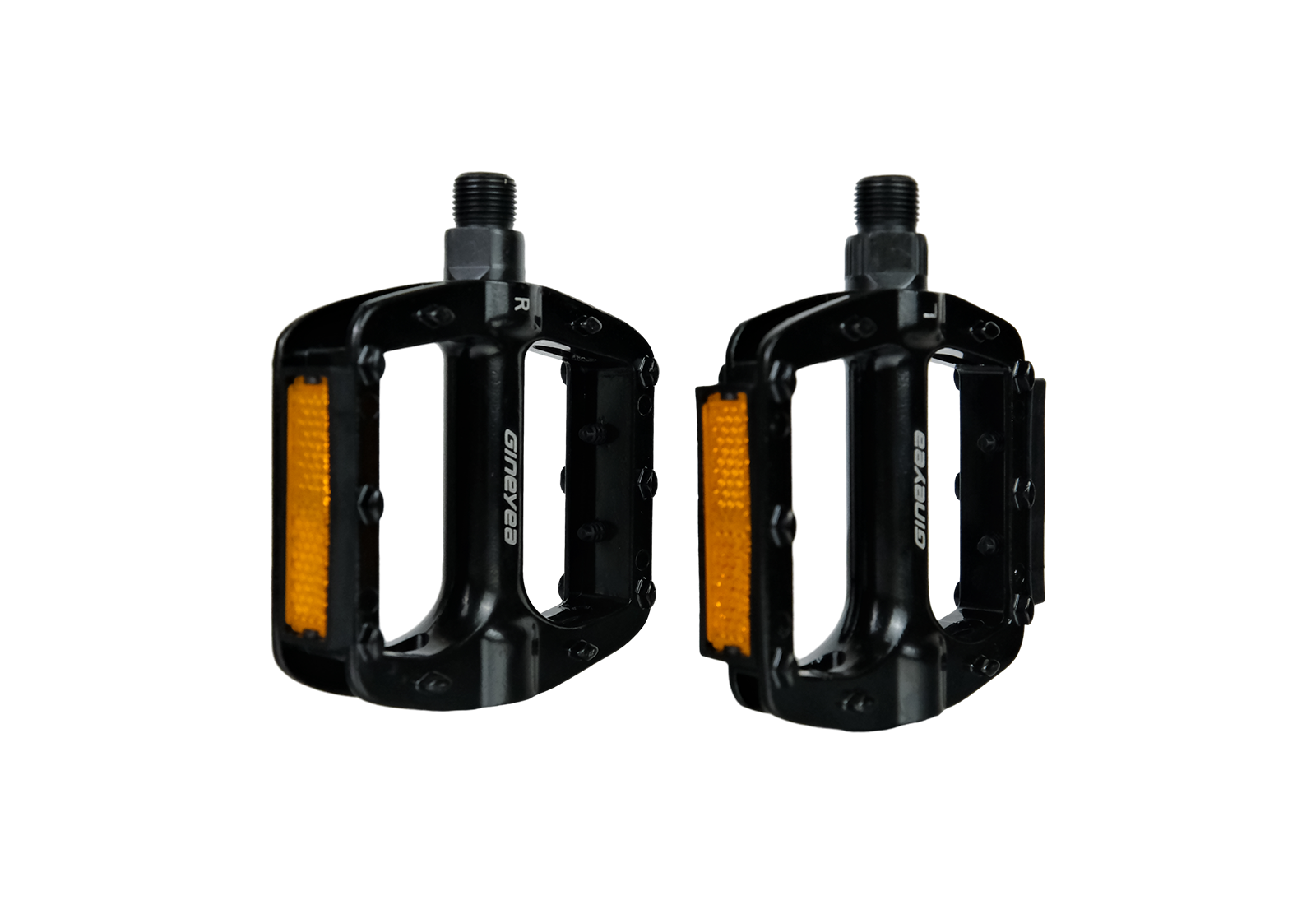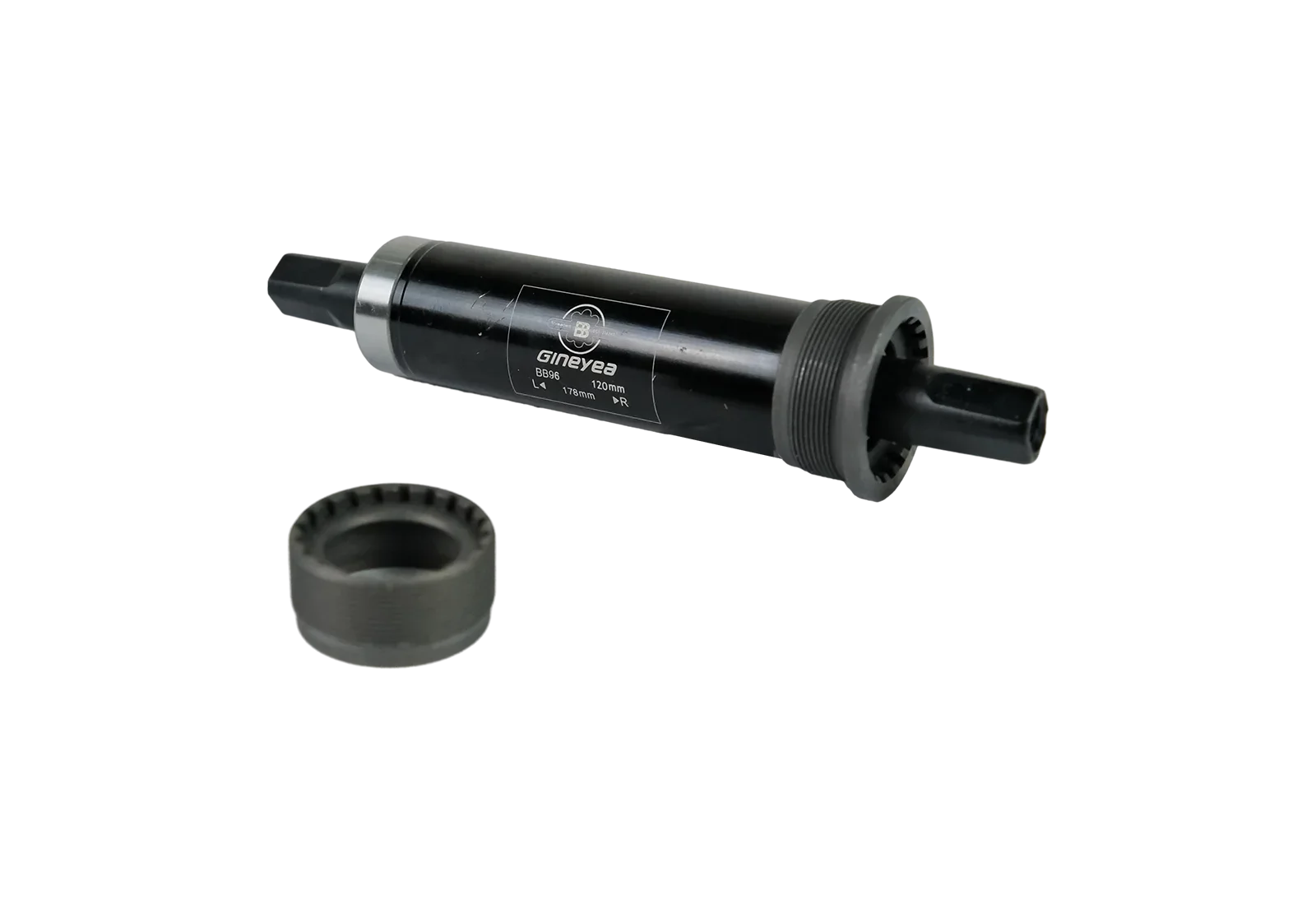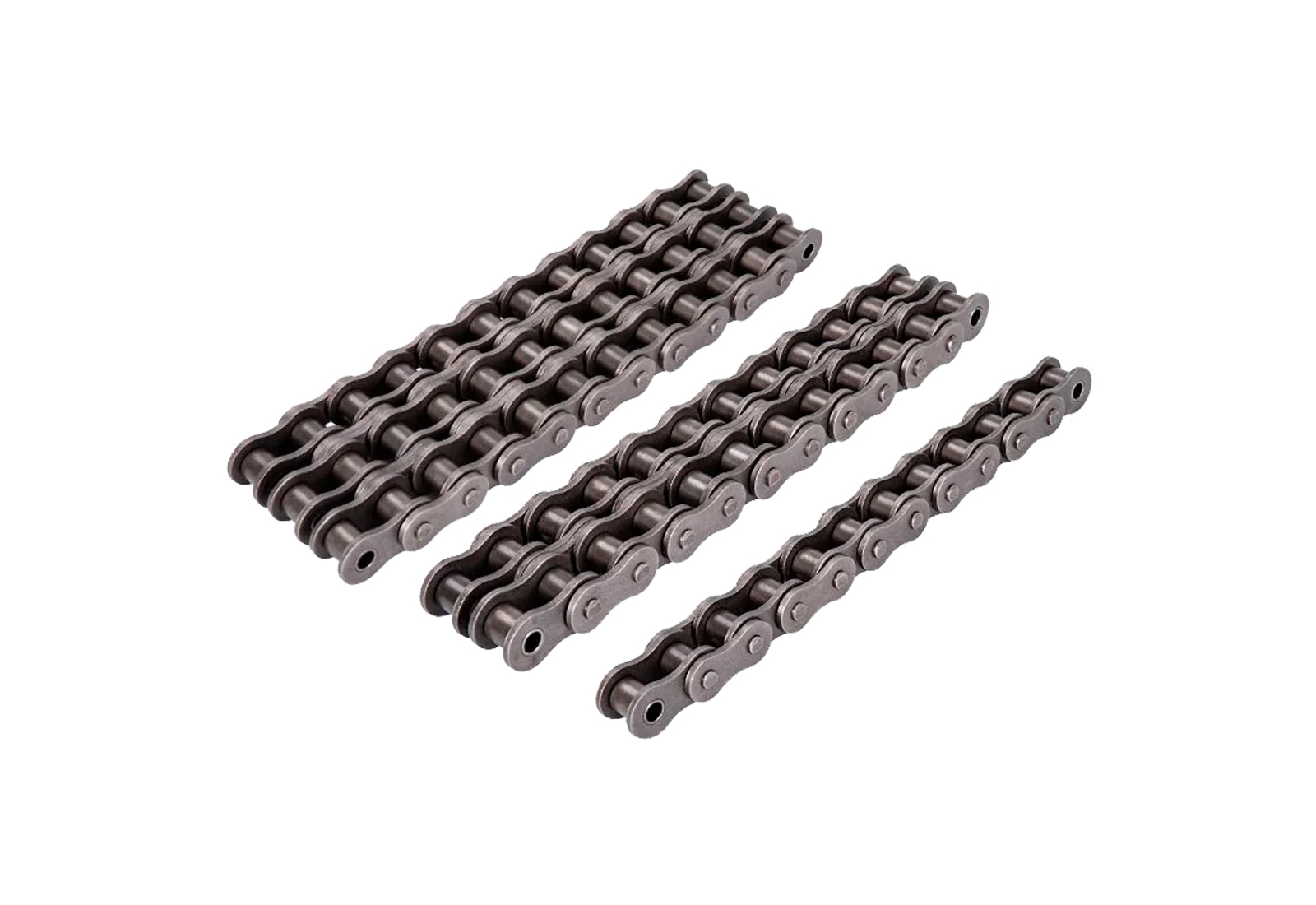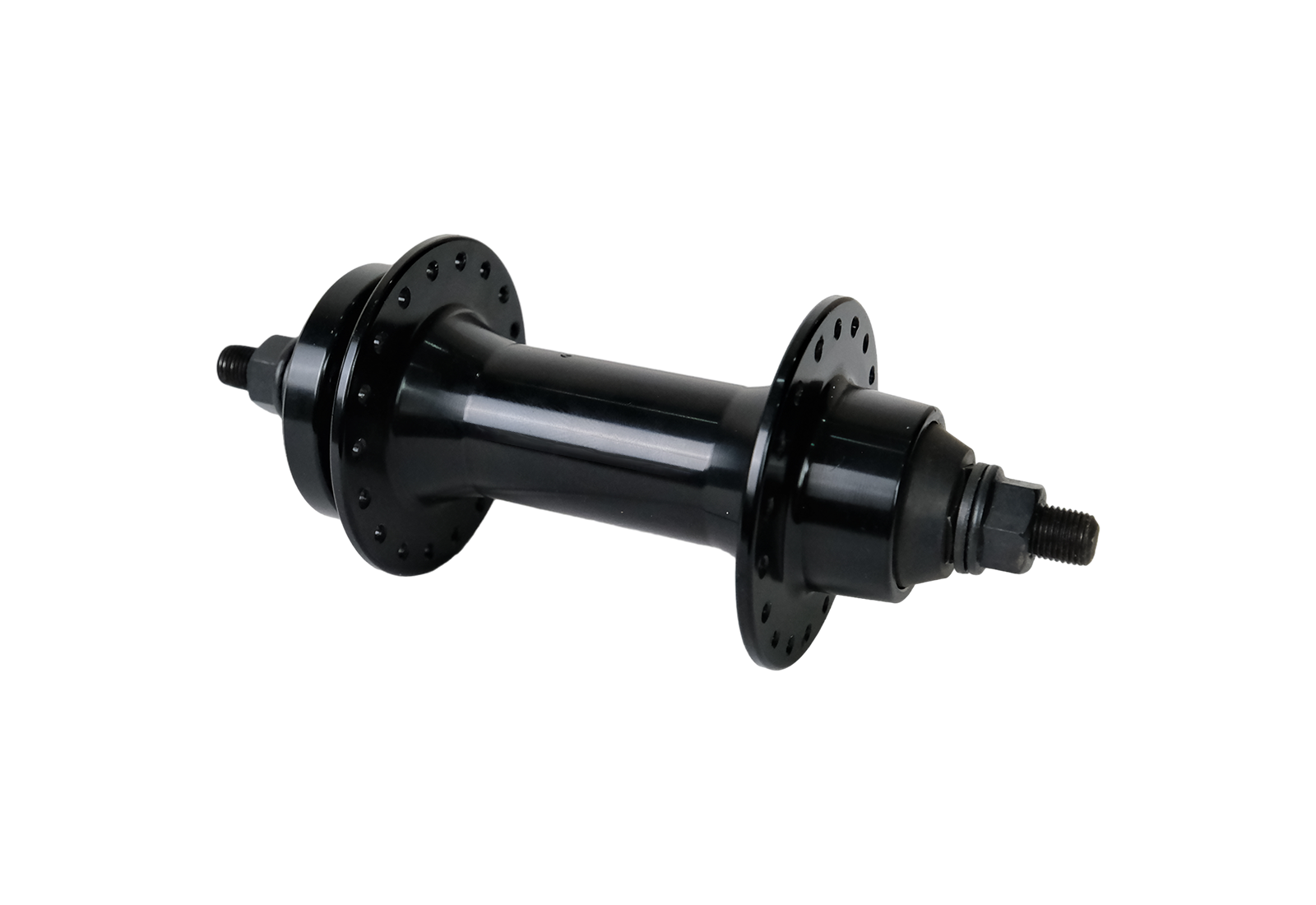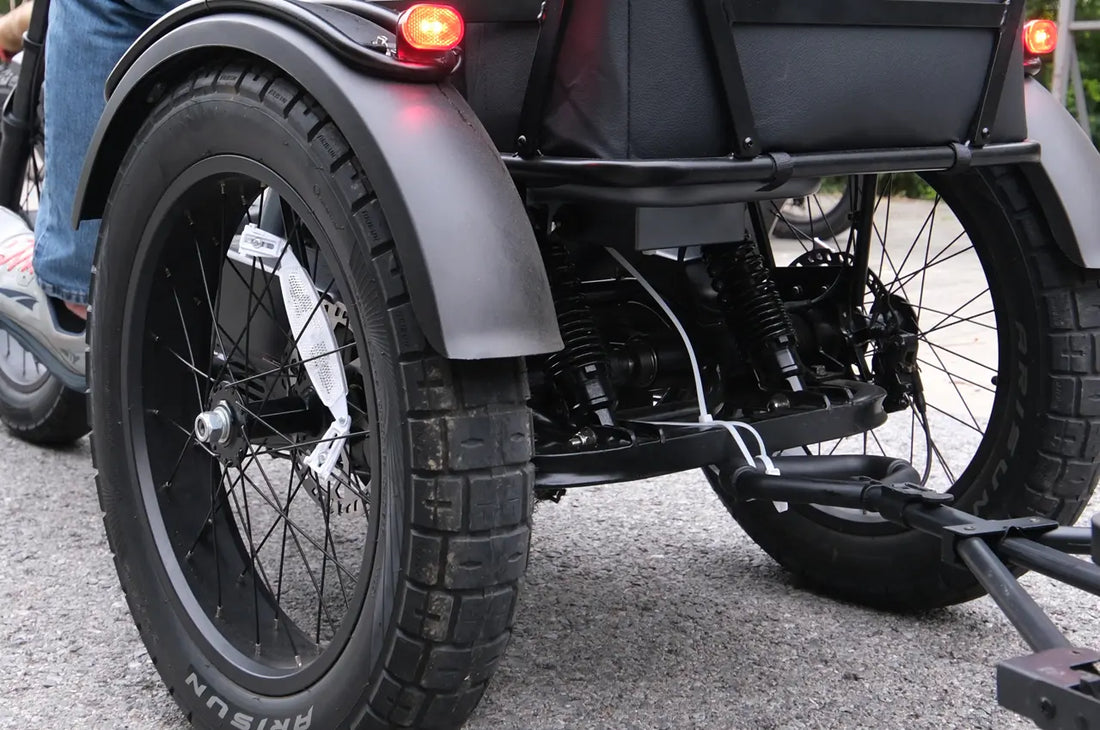
Why Would You Want Suspension on Your E-Trike?
Most people don’t think about suspension when they first start looking at electric trikes. You’re probably more focused on things like how far it goes, how fast it is, and whether it feels stable. But suspension? That’s something you don’t fully appreciate until you hit a rough patch — literally.
If you’re someone who rides for comfort, recovery, or daily errands, this is worth understanding. Especially if you’re older, dealing with back or joint issues, or just want a smoother ride, suspension might be one of those features that changes the game — quietly, but meaningfully.
Let’s break it down, no fluff.
What Suspension Actually Does?
On a regular bicycle or e-bike, you’ve probably felt that sharp jolt when you go over a crack or pothole. Your arms take the hit, and your back feels it later.
Suspension helps with that.
Specifically, on a trike, front suspension forks absorb some of the vertical movement when you ride over uneven surfaces. Instead of transferring all that bump straight to your hands, shoulders, and spine, the suspension compresses — taking some of the impact and softening the ride.
Now, we’re not talking luxury-car-smooth here. But if you regularly ride on older sidewalks, city streets, bike paths with root cracks, or hard-packed dirt, it can make a big difference in how your body feels afterward.
The Two Most Common Suspension Types on E-Trikes
If you’re just getting familiar with suspension options, here’s what you need to know. E-trikes typically come with one of two types of suspension setups:
- Front Fork Suspension – The most common setup. This adds a suspension fork to the front wheel, which compresses when you hit a bump. It helps with steering comfort and takes the sting out of everyday obstacles like sidewalk gaps or uneven pavement.
- Rear or Full Suspension – uch less common. You’ll usually find this on high-end or off-road e-trikes. Rear suspension absorbs impacts from the back half of the trike — especially helpful when carrying cargo or riding on rougher surfaces for longer periods. Full-suspension trikes (with both front and rear suspension) offer the most comfort but also tend to cost more and weigh more.
If you’re someone who regularly rides over mixed surfaces or deals with lower back or hip tension, it’s worth checking out a full suspension etrike like the Meet One Tour Lite. It’s not just for off-road riders — it’s built for everyday comfort, with a balanced setup that soaks up road buzz without overcomplicating your ride.
Do You Need Suspension?
That depends on two things: where you ride and how your body responds to the ride.
If your typical route is mostly smooth pavement or dedicated bike paths, and you’re not feeling sore after rides, then a rigid fork (no suspension) might be totally fine. Some folks actually prefer it because it’s slightly more efficient — nothing is “giving” or moving, so you get a more direct connection with the road.
But if you deal with hand numbness, back tightness, or any kind of stiffness after riding, front suspension might help reduce that. It doesn’t fix everything, but it does take the edge off. And if you ride on mixed surfaces — like gravel paths, bumpy intersections, or even just poorly maintained sidewalks — you’ll notice the improvement pretty quickly.
Comfort vs. Efficiency (and Why It Matters Less Than You Think)
You’ll sometimes hear that suspension can “slow you down” — and that’s partially true. Suspension forks absorb not only shocks but also a bit of your pedaling energy. On a road bike or a racing setup, this matters a lot.
But on an e-trike? Not so much.
The motor is doing most of the heavy lifting. Whether you’re pedaling in PAS mode or just using the throttle, the energy savings from a rigid fork are minimal. Unless you’re trying to set a speed record, the real-world effect is tiny — especially when comfort is at stake.
Put simply: you’ll barely notice the difference in effort, but your joints will definitely notice the difference in shock absorption.
The Lockout Feature: Flexibility When You Want It
A nice touch on some suspension forks is the lockout feature. This lets you turn off the suspension — manually locking it so it behaves like a rigid fork.
Why would you want that? Maybe you're riding on completely flat roads and want the most stable, firm ride. Or maybe you're carrying cargo and want to avoid that slight bounce you get from a suspended front end.
Having the ability to switch between locked and unlocked modes gives you options. It’s like having two forks in one: smooth when you need comfort, firm when you want control.
So, Is It Worth It?
This is a personal decision, but here’s what I usually tell folks:
If you mostly ride short distances, on smooth surfaces, and don’t have body discomfort after rides, you can probably skip it.
But if you’re putting in more than a few miles, riding on unpredictable surfaces, or dealing with any sort of joint or back pain — yes, it’s worth it.
Even more so if you’re a bit older or just getting into riding again after a long break. Anything that encourages you to ride more, ride farther, or feel better doing it — that’s worth considering.
Real Talk for Real Riders
Most people shopping for e-trikes aren’t out here trying to race or win medals. You’re likely using it for errands, cruising around town, or enjoying time outdoors without beating up your knees. And that’s the point. A good trike should make riding feel better, not harder. Suspension plays into that.
Will it cost a bit more? Probably. Is it the flashiest upgrade? Nope. But it’s one of those features that you’ll be thankful for the first time you hit a bump and don’t feel it rattling through your spine.
Final Thoughts
At the end of the day, suspension isn’t a must-have for everyone. But if you ride on varied terrain or care about making your ride feel smooth and easy, it’s something you’ll appreciate — even if you didn’t think you needed it.
So, if you’re still on the fence: think about your body, your usual route, and how long you want to keep riding comfortably. That’s what it comes down to.
And if you’re ever in doubt? Try a test ride — one with suspension and one without. Your back will let you know which one to pick.
If you’ve got questions about suspension, riding posture, or what e-trike setup might suit your needs best, feel free to reach out. We’ve helped thousands of people find the right fit — and we’d be glad to help you too.
